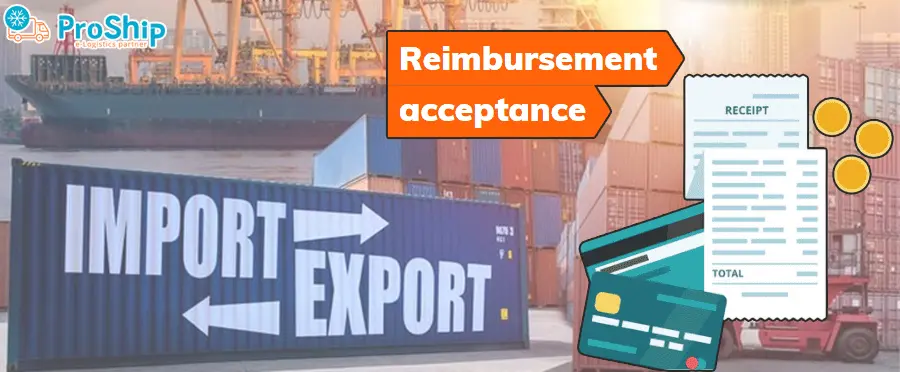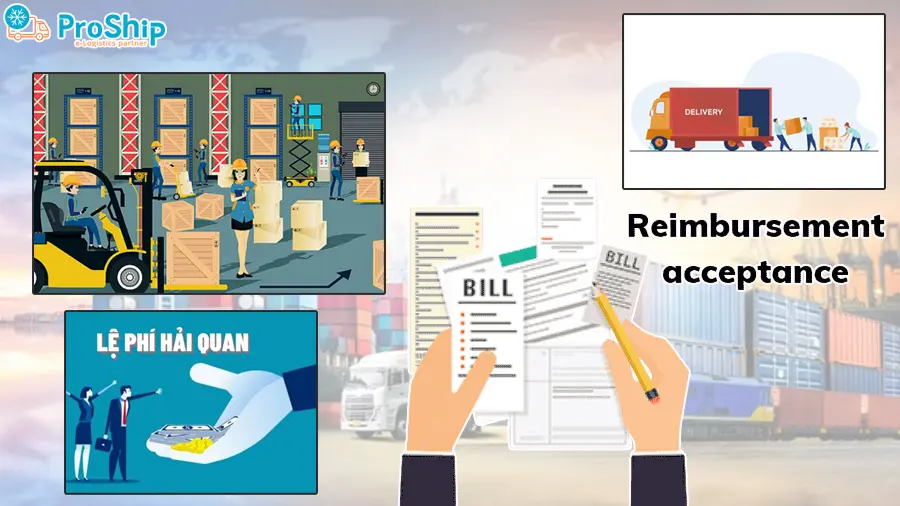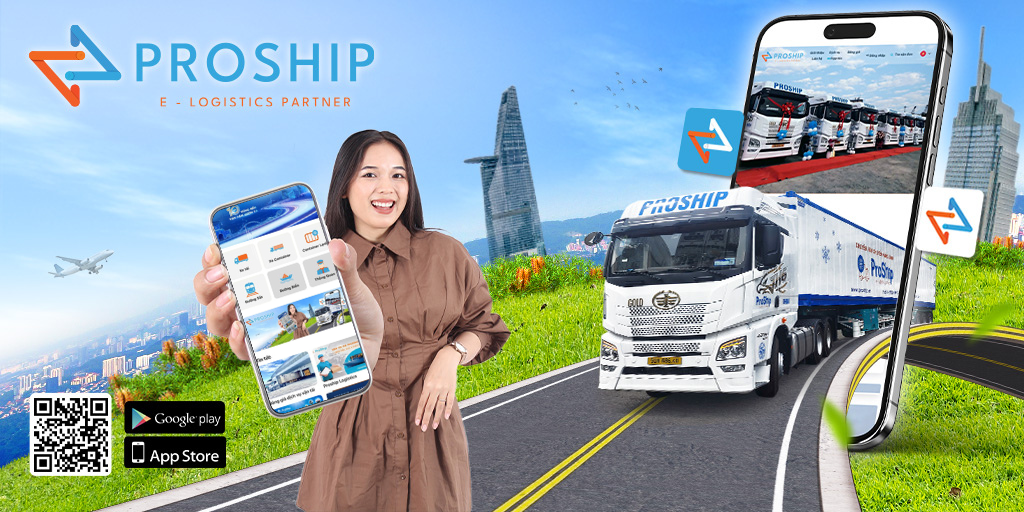x Các doanh nghiệp XNK từng nghe qua Reimbursement Fee nhưng chưa hiểu rõ Reimbursement Fee là gì?
x Bạn quan tâm đến lợi ích của phí Reimbursement Fee? Bạn chưa biết cách tính phí này ra sao?
x Bạn muốn biết cách thức, quy trình thanh toán Reimbursement Fee như thế nào?
Trong khuôn khổ bài viết này, PROSHIP.VN sẽ chuyển tải kiến thức cần biết về Reimbursement Fee là gì, lợi ích liên quan,…và quy trình chấp nhận hoàn trả phí Reimbursement cho các doanh nghiệp chuyên làm hàng xuất nhập khẩu dễ dàng phân biệt phí này với các loại phí, phụ phí thông dụng khác.
Reimbursement Fee là gì, có lợi ích gì?
Reimbursement Fee là phí gì?
Reimbursement Fee là gì? Phí Reimbursement Fee là khoản phí phát sinh trong quá trình phát hành hối phiếu khi một bên chấp nhận thanh toán. Reimbursement Fee trong XNK là khoản phí mà bên xuất khẩu hoặc nhập khẩu yêu cầu được hoàn trả lại các chi phí phát sinh trong quá trình vận chuyển, xử lý hoặc giao nhận hàng hóa.
Phí này thường sử dụng để bù đắp các chi phí mà một bên phải trả thay cho bên khác như chi phí vận chuyển, phí hải quan, phí lưu kho, hoặc các khoản thuế và lệ phí khác. Trong nhiều trường hợp, doanh nghiệp XNK phải thanh toán trước các chi phí này, sau đó yêu cầu bên đối tác hoàn trả thông qua Reimbursement Fee.

Lợi ích của Reimbursement Fee
Lợi ích của Reimbursement Fee là gì? Reimbursement Fee giúp quá trình XNK diễn ra suôn sẻ, tránh sự trì hoãn trong giao nhận hàng hóa. Giúp phân chia chi phí hợp lý – Các khoản phát sinh của phí Reimbursement Fee được phân bổ chính xác theo thỏa thuận trong hợp đồng thương mại.
Các tính của phí Reimbursement Fee như thế nào?
Phí Reimbursement fee không có công thức tính cố định vì nó phụ thuộc vào các loại chi phí mà bên trả phí ban đầu đã trả trước. Các chi phí này gồm:
- Phí lưu kho: Chi phí lưu trữ hàng hóa tại cảng được tính theo thời gian hàng hóa bị giữ tại kho;
- Phí hải quan: Được tính dựa trên mức thuế xuất nhập khẩu tại quốc gia nhập khẩu;
- Phí vận chuyển: Các chi phí phát sinh trong vận chuyển từ cảng đến địa điểm cuối cùng, gồm phí vận chuyển đường biển, đường bộ, hoặc đường hàng không.

* Ví dụ: Nếu bên xuất khẩu trả trước 500 USD phí vận chuyển, 300 USD phí hải quan và 200 USD phí lưu kho, tổng Reimbursement Fee là 1,000 USD. Khoản này được yêu cầu hoàn trả từ bên nhập khẩu.
Phí, phụ phí cơ bản trong xuất nhập khẩu
Với một lô hàng xuất nhập khẩu theo đường hàng không, đường bộ, đường biển hay đường sắt sẽ có nhiều loại phí và phụ phí:
- AMS:
AMS (Advanced Manifest System Fee) là phí hải quan đặc biệt cho những lô hàng đi Mỹ, Canada,…Phí này thu ở điểm gửi và thu trên mỗi lô hàng.
- Amendment Fee:
Phí chỉnh sửa B/L (Amendment Fee) chỉ áp dụng với hàng xuất. Khi phát hành một bộ B/L cho shipper, sau khi shipper lấy về hoặc do nguyên nhân nào đó cần chỉnh sửa một số chi tiết trên B/L và yêu cầu hãng tàu/forwarder chỉnh sửa thì họ có quyền thu phí chỉnh sửa. Phí này thu tại điểm gửi và thu trên mỗi lô hàng (B/L).
- BAF:
BAF là phụ phí mà hãng tàu thu từ chủ hàng để bù đắp chi phí phát sinh do biến động giá nhiên liệu. Phí này thu theo số lượng cont ở điểm gửi hoặc nhận.
- Bill:
Có thể là Bill of Lading fee (với đường biển) hoặc Airway Bill (với XNK đường hàng không). Phí này thu tại điểm gửi và thu trên mỗi lô hàng.
- CLEANING:
Cleaning Container Fee là phí vệ sinh Cont sau khi hàng hóa được gửi đến địa điểm nhận. Mỗi hàng sẽ có một mức thu khác nhau tùy loại Cont.
- CFS:
Mỗi khi có một lô hàng lẻ xuất/nhập khẩu thì các Công ty Consol/Forwarder phải dỡ hàng từ container đưa vào kho hoặc ngược lại và họ thu phí CFS. Phí này có thể thu tại Điểm gửi hoặc nhận và thu theo cbm của lô hàng (chỉ áp dụng cho hàng lẻ LCL).
- DO:
DO là phí giao hàng, được thu tại địa điểm nhận và thu trên mỗi lô hàng. Các hãng tàu sẽ xuất DO để các nhà nhập khẩu đến nhận hàng. Ngoài ra, nếu shipper hay consignee nhờ làm các giấy tờ thủ tục kê khai hàng hóa,…sẽ có thêm phí DO khác là Document Fee (phí chứng từ).
- THC:
THC hay Terminal Handling Charge tức là phí xếp dỡ (cầu, cảng). Là khoản phí thu trên mỗi container để bù đắp chi phí cho các hoạt động làm hàng tại cảng gồm: xếp dỡ, vận chuyển, bến bãi,…Phí này thường được thu ở điểm gửi/nhận và thu trên các đầu container.
- THD:
THD (Terminal Handling at Destination) là phí cầu cảng được thu tại điểm đến. Mức phí thu tùy thuộc vào loại container.
- SEAL:
Seal (phí niêm phong) là phí mua Seal niêm phong cont hàng, đảm bảo an toàn cho hàng hóa xuất nhập cũng như tiện cho công tác theo dõi của hải quan nhập xuất. Phí này thu theo từng cont. Ngoài ra còn có phí CIC, GRI, IFB, IFS,…
Quy trình chấp nhận hoàn trả phí Reimbursement fee
Proship đã làm rõ Reimbursement Fee là gì. Tiếp theo là quy trình chấp nhận hoàn trả phí Reimbursement fee:
Bước 1
Bên nhập khẩu yêu cầu ngân hàng của mình tìm một ngân hàng hạng nhất để thực hiện việc chấp nhận thanh toán hối phiếu do bên xuất khẩu ký phát, thông qua việc phát hành một L/C chiết khấu, không hủy ngang, để đảm bảo quyền lợi cho bên xuất khẩu.
Bước 2
Ngân hàng bên nhập khẩu gửi cho ngân hàng hạng nhất phát hành L/C một cam kết hoàn trả các hối phiếu do bên xuất khẩu phát hành khi đến hạn.
Bước 3
Ngân hàng hạng nhất sau đó phát hành L/C chiết khấu, không thể hủy ngang, cho bên xuất khẩu, cam kết thanh toán hối phiếu của bên xuất khẩu khi các chứng từ gửi hàng được trình bày đầy đủ và phù hợp với các điều kiện trong L/C.
Bước 4
Sau khi giao hàng, bên xuất khẩu lập hai bản hối phiếu giống nhau và có giá trị tương đương cùng với các chứng từ gửi hàng, và trình cho ngân hàng chiết khấu. Ngân hàng kiểm tra hối phiếu (bản thứ nhất) và các chứng từ kèm theo. Nếu phù hợp với các điều kiện của L/C, ngân hàng sẽ chiết khấu và thanh toán ngay.

Bước 5
Ngân hàng chiết khấu gửi hối phiếu đòi nợ (bản thứ hai) kèm theo các chứng từ vận chuyển đến ngân hàng hạng nhất đã phát hành L/C, với yêu cầu chấp nhận và thanh toán hối phiếu.
Bước 6
Sau khi xem xét, ngân hàng hạng nhất sẽ ký chấp nhận hối phiếu và gửi lại cho ngân hàng chiết khấu, đồng thời chuyển giao các chứng từ vận chuyển cho bên nhập khẩu.
Điều kiện thực hiện việc này là bên nhập khẩu phải ký vào cam kết chấp nhận hoàn trả khi hối phiếu đến hạn. Nếu các chứng từ không khớp với các điều khoản quy định trong L/C, bên nhập khẩu có quyền từ chối ký cam kết.
Bước 7
Khi đến hạn thanh toán hối phiếu đòi nợ, bên nhập khẩu thực hiện chuyển tiền cho ngân hàng hạng nhất phát hành L/C để thu hồi lại bản cam kết hoàn trả đã ký trước đó. Sau đó, ngân hàng hạng nhất sẽ thanh toán cho bên thụ hưởng của hối phiếu đòi nợ theo yêu cầu thanh toán.
Reimbursement Fee là gì, lợi ích, cách tính phí, quy trình thanh toán phí Chấp nhận hoàn trả thế nào,…là những nội dung đã được Proship chuyển tải tới Quý doanh nghiệp. Mọi thắc mắc liên quan tới phí và phụ phí trong XNK, quý khách có thể để lại bình luận bên dưới và khi có nhu cầu sử dụng Dịch vụ vận tải Đa phương thức giá rẻ, liên hệ 0909 344 247.

